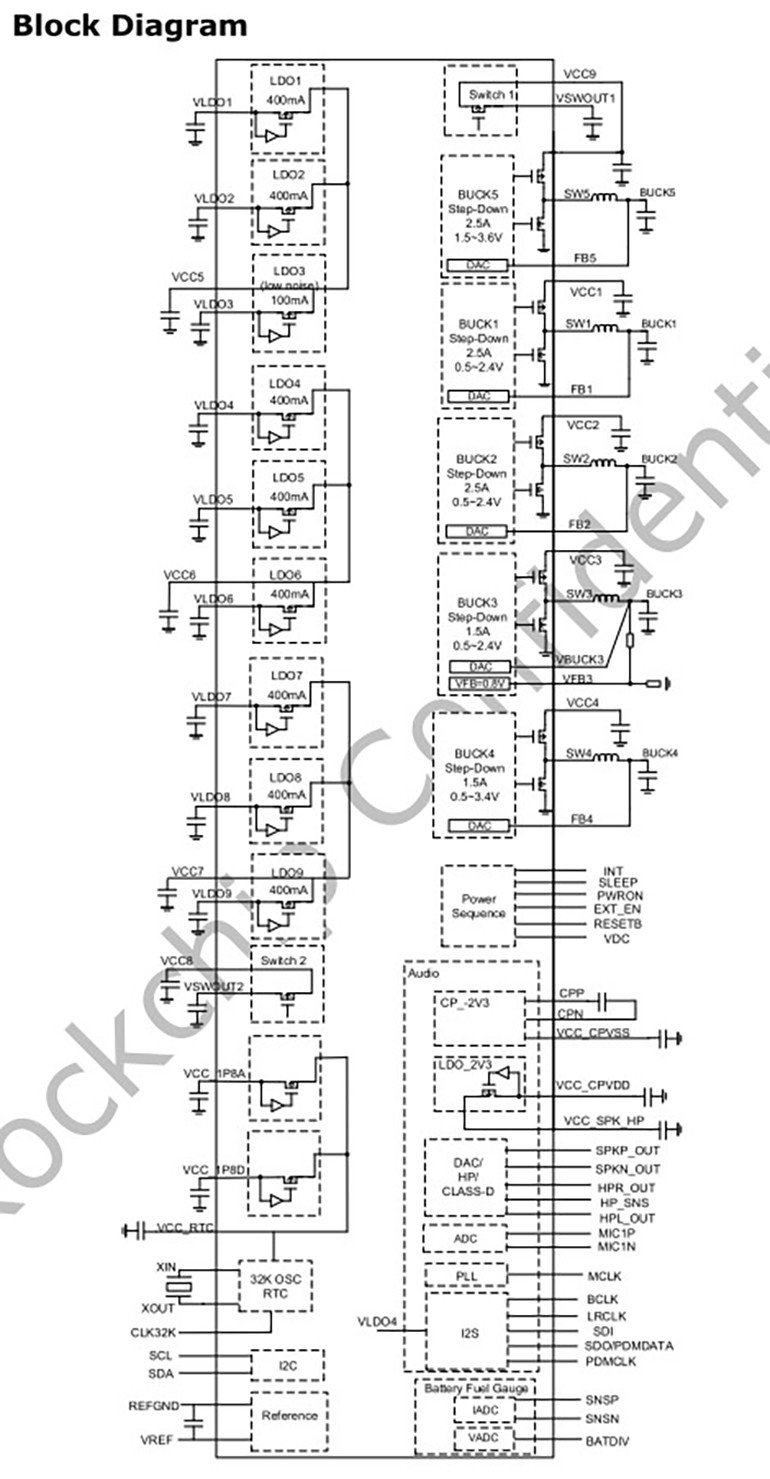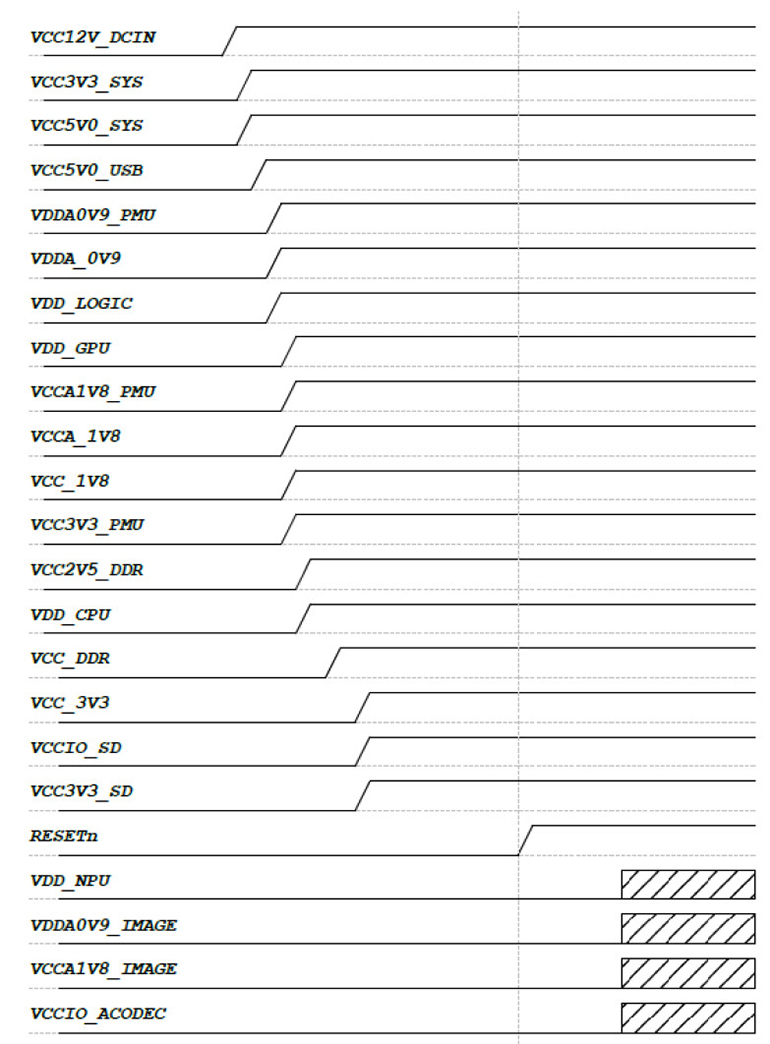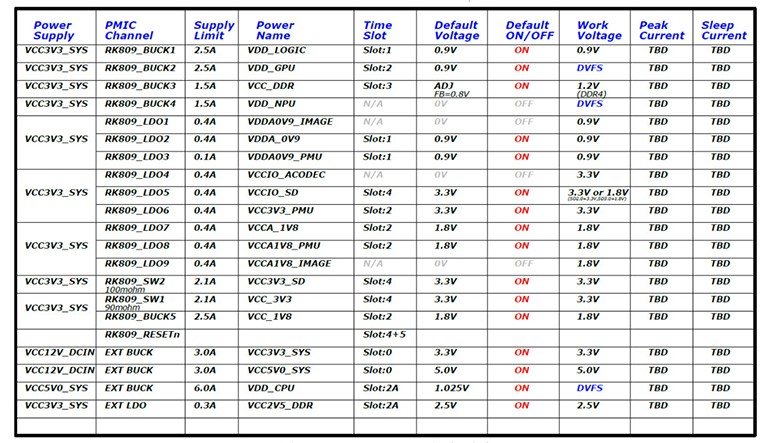Power-On Sequence Requirements for the Rockchip RK3568 PMU RK809-5
The Rockchip RK3568 is a high-performance and multifunctional processor widely used in embedded devices, industrial control, and smart terminals. To ensure the proper functioning of the RK3568, the design of the power management unit (PMU) RK809-5's power-on sequence is particularly critical. This article details the power-on sequence requirements and design considerations for the RK809-5 to ensure stable operation of the processor.
1. Overview of RK809-5 Power Outputs
The RK809-5 is a highly integrated PMU specifically designed for the RK3568, offering multiple output voltage channels to power the core modules, memory interfaces, and peripheral devices. Key power outputs include:
DCDC1, DCDC2, DCDC3, DCDC4: Provide power for the RK3568’s core components, such as LOGIC, GPU, DDR, and NPU.
LDO1~LDO8: Provide power for DDR, I/O interfaces, and other peripheral modules.
RTC Power: Supplies the real-time clock module to ensure operation during power outages.

Figure 1 Internal block diagram of RK809-5
2. Power-On Sequence Requirements for the RK3568
The power-on sequence for the RK3568 must follow strict timing requirements. Failure to do so may result in the processor failing to boot or sustaining damage. The power-on sequence requirements for the RK809-5 are as follows:


Figure 2 RK3568 power-on timing requirements
2.1 Logic Power (VDD_LOGIC)
Voltage Output: Supplied through the DCDC1 channel with a typical voltage of 0.8V–1.2V (adjusted based on application scenarios).
Power-On Sequence: VDD_LOGIC must be the first module to power on to ensure the initialization of the core circuitry.
2.2 GPU Power (VDD_GPU)
Voltage Output: Supplied through the DCDC2 channel.
Power-On Sequence: Must power on after VDD_LOGIC is stable.
2.3 DDR Power (VDD_DDR)
Voltage Output: Supplied through the DCDC3 channel.
Power-On Sequence: Must power on after VDD_GPU is stable.
3. Design Considerations for the Power-On Sequence
3.1 Power-On Sequence Control Circuit
Utilize the internal power sequence management functions of the RK809-5. Configure pins or the I2C interface according to the hardware design to adjust the sequence.
For more precise control, external power management ICs can be used to implement multi-stage sequence control.
3.2 Decoupling Capacitor Selection
Add appropriate decoupling capacitors (e.g., 10µF, 100µF) at each power channel output to reduce power ripple and interference with the modules. The design of decoupling capacitors for LOGIC and DDR power supplies is particularly important. Low ESR ceramic capacitors are recommended.
3.3 Power-On Voltage Stability
Ensure that each power output voltage remains stable during power-on, especially the core power (VDD_CORE), as its stability directly impacts the system boot success rate. Use an oscilloscope to check the voltage waveform and verify that the power rise time and stability meet design requirements.
3.4 Buck Conversion Efficiency
The DCDC conversion efficiency of the RK809-5 can reach 85%–90%. Distribute power reasonably based on the load to avoid instability caused by overload.
4. Common Issues and Solutions
4.1 Power-On Sequence Disruption
Symptom: System fails to boot or crashes randomly.
Solution: Check whether the sequence settings meet RK3568 specifications. Optimize PCB layout to reduce signal interference.
4.2 Voltage Instability
Symptom: Power drops or system restarts during operation.
Solution: Increase the decoupling capacitor capacity or check whether the power load exceeds the RK809-5's output capacity.
4.3 Peripheral Power Abnormalities
Symptom: USB, Ethernet, and other modules fail to function.
Solution: Verify whether the peripheral power channel meets the module's power requirements and check if related signals are correctly connected.
5. Conclusion
The power-on sequence of the Rockchip RK3568 is a key design factor to ensure the stable operation of the system. The RK809-5 provides an integrated power management solution, simplifying design complexity. Through proper power-on sequence design, reliable power output configuration, and effective debugging and optimization, developers can fully leverage the RK3568’s performance advantages to provide efficient and stable support for embedded and industrial systems.
Hangzhou Weathink Electronics Co., Ltd., as a professional motherboard design company, adheres to strict compliance with chip requirements in power-on sequence and power design. For any issues encountered, please feel free to contact Weathink. The WTB-RK3568S industrial control board provided by our company is based on the independently designed RK3568 SOM offering stable and reliable industrial computer solutions.






